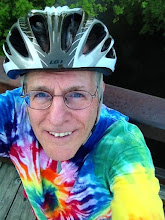I love the University of Colorado. For nine years I spoke at the annual Conference on World Affairs, held at the beginning of April. The University has an excellent faculty and passionate and intellectually engaged students. The Boulder community is intellectually and artistically engaged.
But even as many American college campuses have cultures of alcohol abuse, Colorado's is quite striking. I was speaking about drug abuse at a sociology class there a number of years ago. Responding to my question to the students seeking their observations of drug use on campus, an exchange student from Europe said she thought that her classmates at Colorado were "obsessed" with getting drunk. I asked for a show of hands, "how many of you agree with that assessment -- most students at this university are obsessed with getting drunk?" Three-quarters of the class agreed. I was taken aback.
But I remember a small party of undergraduates in a student home on a Thursday night. Students were bringing in cases, beer, wine and whiskey that looked sufficient for an enormous crowd, not a simple house party on a weeknight. One student throughout the night carried a magnum of wine in his hand the way most people might carry a glass of wine -- it was his drink.
The University of Colorado has had a number of infamous alcohol riots, and it seems almost annual dramatic deaths from alcohol use. Around the campus and community, there are university signs or logos linked with the logos of all manner of alcohol beverages.
University Police Lt. Tim McGraw of the University police says "alcohol abuse is a top priority" but that the University police must discourage blatant marijuana smoking.
With the SAFER movement, the students have voted to try to equalize the punishments for alcohol and marijuana offenses.
Farrand Field is a quadrangle in the middle of the campus surrounded by four residence halls that has been the site of political demonstrations and marijuana protests in the past. Last year the University closed the field. The campus police dispatcher told me this morning that the campus police came to the event last year make sure the event was peaceful, and did not arrest any of the estimated 2000 protestors. But the police did turn on the lawn sprinklers to disperse the crowd.
Photographs of student protesting marijuana laws by smoking marijuana defiantly were published in newspapers, and the State threatened the University with financial sanctions
The University therefore this year closed a quad, to students on April 20, the site of an annual marijuana smoke-in. Signs were posted stating that entry onto the quadrangle would be deemed criminal trespass.
Then the University sent undercover officers with cameras, and deployed surveillance cameras to photograph students who attended the smoke-in on the field in the middle of the campus. THEN the University posted the photographs on the University police website.
THEN the University police offered to pay $50.00 for the identification of each student whose photograph they took!
The University sometimes posts composite drawings of suspected rapists or video images of bicycyle thieves and other offenders to identify criminals. The state CrimeStoppers program may pay rewards for such identifications.
But this is a political protest, a constitutionally protected activity in the United States and Colorado.
The University is caving in to political pressure to suppress a political unpopular movement. As has been the case of decades, the political establishment is using law enforcement resources inappropriately for political purposes. And here, in a very clumsy way, is dramatizing the socially dangerous culture of informing that police have come to depend upon.
Monday, May 01, 2006
University Law Enforcement goes over the top in Colorado
Subscribe to:
Post Comments (Atom)





No comments:
Post a Comment